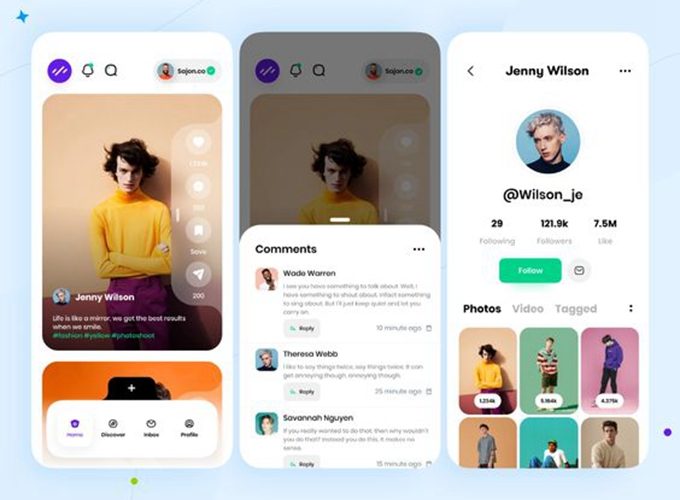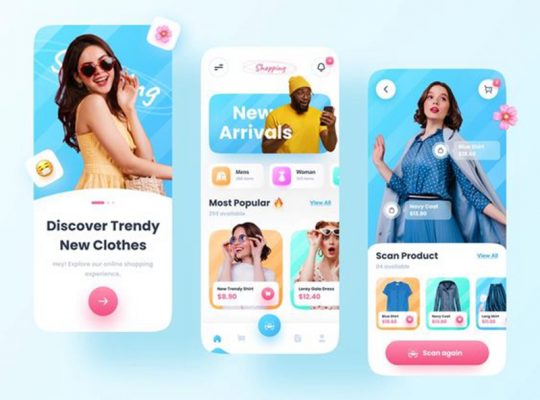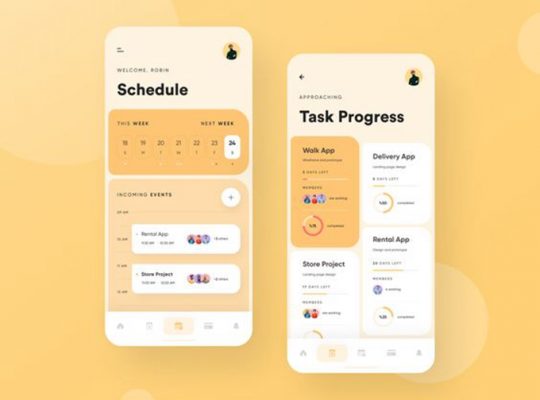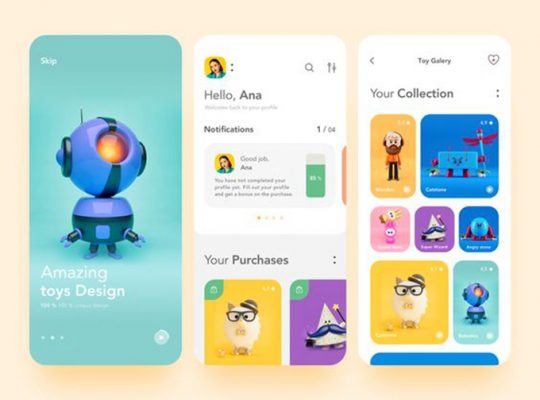Knowledge in the precise fingers will be immensely highly effective and demanding to any resolution making. For instance, information can show very helpful when discovering the explanations, causes, or the influence of fixing circumstances or behaviours in particular situations. That being stated, when analysing substantial quantities of information, easy statistics can expose a substantial amount of info.
Table of Content
- Mobile Marketing
- ios app installs
- guaranteed keyword ranking
- ios ratings
Nevertheless, it’s often extra crucial to critically study relationships inside the information as generally information will be grossly misunderstood. That is particularly seen in cases associated to correlation and causation, the place understanding their respective variations is significant to efficient advertising, as complicated these ideas can result in pricey errors.
All through at present’s article, we’ll labour to unpack the distinctions between causation and correlation in relation to cellular advertising, in addition to the nuances that characterise each. So, with out additional ado, let’s dive in!
What Is Correlation?
Usually talking, correlation is a statistical measure leveraged to reveal the linear relationship between two steady variables, for example, top and weight. Sometimes, correlation is utilised to estimate the power or path between two or extra variables that keep a linear relationship.
Total, correlation constitutes statistical relationships that contain dependence. For instance, the correlation between the bodily top of fogeys and their youngsters or the correlation between the demand for an merchandise and its worth. In precept, these two occasions relate to one another. Nevertheless, if one occasion doesn’t happen, the opposite will nonetheless occur in some way.
This phenomenon is definitely exemplified by the Pearson correlation, which measures the linear relationship between two variables.
The Completely different Varieties of Correlation
- Optimistic Correlation
In observe, a constructive correlation basically demonstrates the connection between two variables the place the worth of two variables will increase or decreases concurrently. As an illustration, time spent finding out and rating averages, training and earnings ranges, or poverty and crime ranges.
- Detrimental Correlation
Usually talking, a damaging correlation depicts a relationship between two variables the place the worth of 1 variable will increase whereas the opposite decreases—for example, inexperienced automobiles and accident charges, or product provide and demand.
- No Correlation
In no correlation, two variables are utterly unrelated. As an illustration, change in B creates no adjustments in D, or the opposite approach round.
What Precisely Is Causation?
Causation, also referred to as causality, is basically a type of correlation the place a change in a single variable will impact a change within the different variable. In observe, two variables will likely be associated, and one can infer what’s going to occur to at least one variable, when the opposite one is modified.
In observe, causation depicts the bodily relationship between a trigger and its impact. As such, it assumes the capability of 1 variable will influence the opposite, the place the primary variable brings the second into existence. Nevertheless, the second variable can fluctuate due to the primary variable. For essentially the most half, causation works on the premise that occasions occur in predictable methods.
Usually, causation is a classy idea. For instance, C would possibly have an effect on D; nonetheless, a number of issues could have an effect on D which may not have an effect on C. Thus, occasions have many causes. Nonetheless, the central theme of ‘trigger’ means D all the time occurs if C happens, and D by no means happens if C doesn’t occur.
For example, a automotive accident will be attributable to faulty brakes, driver incompetence, poor highway design, ice, or the evolution of people—all on the similar time. Nevertheless, if one eliminates the issues they can’t change as irrelevant and the issues which are so advanced that altering them isn’t an environment friendly approach to trigger predictable adjustments in D, in that case, they’ll arrive at a helpful definition of “trigger.”
Total, in our day by day lives, causation is transitive. Which means that if A causes B and this B additionally causes C, then we usually settle for that A causes C. This idea is usually known as oblique causation
Whereas this is likely to be a bit complicated, grasp in there. We’re going to elaborate extra as we proceed.
Variations Between Causation vs Correlation
Sometimes, many individuals understandably confuse correlation with causation by usually deciphering non–zero correlation as an implied causal relationship. Nevertheless, one factor is necessary to remember: correlation doesn’t imply causality.
To reveal the excellence between correlation and causation, allow us to use an instance of ice cream and automotive thefts. When the gross sales of ice cream rise, then the variety of automobiles stolen may rise. Nevertheless, it’s not legitimate to say that ice cream consumption is the rationale behind the stolen automobiles. As such, there is no such thing as a causal relationship between stolen automobiles and ice cream.
Consequently, this implies a 3rd motive might clarify the correlation between gross sales of ice cream and automotive thefts, which may very well be the climate. Although in the summertime, each ice cream gross sales and automotive thefts might each improve, which signifies that whereas they don’t have a causal relationship, they’re nonetheless correlated. Put merely, correlation doesn’t suggest causation.
Proving Correlation Is Less complicated Than Proving Causation
Correlation demonstrates {that a} mathematical relationship all the time exists. For instance:
(1) altering A causes B to alter
(2) altering B causes A to alter
(3) altering Z (one other variable) causes A and B to alter
(4) a typical co-occurrence is if you take two phenomena that change over time and are linear with respect to time, they may usually correlate with one another
Then again, causation is exemplified by occurrences 1 or 2 and tends to be extra particular (because it has a path the place both A causes B or B causes A. Nevertheless, proving causation is rather more difficult as one can not magically change the scale of kids’s toes to see if their intelligence adjustments, for instance.
As we already established, there’s a appreciable correlation between issues with a causal relationship, and issues which are carefully correlated. That is primarily as a result of causation requires correlation. Nevertheless, the inverse, nonetheless, isn’t legitimate. Issues which are carefully correlated don’t essentially have a powerful causal relationship. In a way, causal relationships are a subset of carefully correlated issues as a result of correlation doesn’t suggest causation.
One other instance of causation is that if Fb needs to know whether or not placing advertisements on information feed moderately than on the aspect will trigger individuals to click on extra usually, it will possibly run an experiment. In such an experiment, they’ll randomly choose 500 million customers to show advertisements on a information feed, one other 500 million to show advertisements on the aspect. So, if one ratio is increased than the opposite considerably, Fb can conclude a causation impact of advert location on click on charge as a result of by randomisation, thus “confounding elements” cancel out. In consequence, correlation doesn’t suggest causation due to “confounding elements”, that are hidden elements that may have an effect on the variables being thought-about.
Methods to Make use of Causation and Correlation in Cellular Advertising and marketing
Ascertaining causation allows builders and entrepreneurs to know the levers at their disposal to influence buyer behaviours. With this information, they’ll higher plan, develop, goal, and implement their cellular promoting budgets.
That being stated, whereas correlation by itself gives actionable clues, entrepreneurs shouldn’t base their plans on correlation alone. Reasonably, they need to be based mostly on experiments designed to determine causation. Different methods entrepreneurs can use these ideas are:
To copy occasions to be able to confirm outcomes
Many clever firms basically run managed experiments to isolate causal relationships by shutting down advertising channels one after the other. As an illustration, if an organization runs a cellular advert and sees a rise in visitors, they may wish to affirm whether or not it’s not resulting from one other channel like a paid search marketing campaign.
So, when utilized properly, causation and correlation can assist one to substantiate the origins of a visitors increase on a selected channel by conducting checks to make sure it’s not a fluke by way of a management group or monitoring ad-driven visitors versus different sources. The general thought is to find out the incremental worth of an advert and whether or not it’s considerably increased than common visitors by isolating and testing the completely different channels.
To analyse the influence of correlation versus causation throughout completely different channels
In terms of attribution, entrepreneurs usually confuse causation and correlation as completely different channels affect outcomes disparately.
Entrepreneurs ought to all the time pay attention to the truth that they are often incorrect about each the correlation and the causation within the information. So, earlier than leaping to random conclusions about both information, it’s necessary to assessment efficiency on all channels and account for any new advertising initiatives.
To keep away from affirmation bias
Correlation can assist you affirm if a particular channel is much less efficient than others, as you’re extra more likely to see causation that isn’t actually there.
For instance, if you wish to market a brand new deodorant to ladies aged 20 to 40, then invite ladies who’ve already tried the product to reply a survey. Because you anticipate constructive responses, chances are high that you simply’ll interpret the outcomes as beneficial to the product. Nevertheless, another person would possibly learn the survey outcomes and conclude that the majority ladies truly disliked the deodorant.
In such cases, it is very important exploit quantitative information to substantiate your hunches and design campaigns round factual info. You’ll be able to dissect collected information and interpret the numbers to establish relationships inside them, with a transparent understanding of causation and correlation to curate an efficient marketing campaign.
Backside Line
In conclusion, causation usually implies correlation, nonetheless, the converse isn’t all the time true. There are too many correlations on the earth, for instance, there are a whole lot of correlations between basketball statistics and inventory costs, but none of them could also be causally associated. Equally, 1000’s of correlations are recognized between components of human DNA and several other ailments, but few of them could also be causally associated.
As statistics multiply, the potential variety of correlations grows exponentially, however the variety of causal relationships grows a lot slower. So, general, there may be zero correlation between correlation and causation. In the end, correlation is an efficient place to begin for locating causation in cellular advertising.






